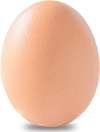Superior Protection&Faster Decomposition & Cost Savings – Food-Grade Sustainable Packaging
Egg Packaging Design: Combining Functionality with Aesthetics for Optimal Protection and Appeal
31 Oct,2025
Egg Packaging Design: Combining Functionality with Aesthetics for Optimal Protection and Appeal
Table of Contents
1. Introduction to Egg Packaging Design
2. The Importance of Functionality in Egg Packaging
3. Aesthetic Appeal: Enhancing Brand Identity
4. Materials Used in Egg Packaging
4.1. Traditional Materials
4.2. Eco-friendly Alternatives
5. Trends in Egg Packaging Design
6. Consumer Preferences and Market Demands
7. Best Practices for Effective Egg Packaging
8. Conclusion
9. FAQs
1. Introduction to Egg Packaging Design
Egg packaging design plays a crucial role in the food industry, bridging the gap between functionality and aesthetics. With the rising consumer demand for both convenience and visual appeal, innovative packaging solutions are more important than ever. In this article, we will explore how effective egg packaging not only protects the delicate product but also enhances its marketability.
2. The Importance of Functionality in Egg Packaging
When it comes to packaging eggs, functionality is paramount. The primary role of egg packaging is to provide adequate protection against physical damage during transportation and storage. Eggs are fragile, making it essential to design packaging that minimizes the risk of breakage.
One effective strategy involves the use of cushioning materials that absorb shocks. Moreover, packaging must allow for proper ventilation to maintain freshness and prevent the growth of bacteria. Additionally, the ease of access for consumers is vital. Packaging designs that offer easy opening and resealing capabilities enhance user experience and encourage repeat purchases.
3. Aesthetic Appeal: Enhancing Brand Identity
While functionality is critical, the aesthetic aspects of egg packaging should not be overlooked. Eye-catching designs can significantly influence consumer purchasing decisions. The visual identity of packaging—including colors, graphics, and shapes—contributes to brand recognition and loyalty.
Creative packaging design can convey a product's quality and value, making it stand out on crowded supermarket shelves. For instance, incorporating unique shapes or vibrant colors can attract attention and evoke positive emotions. This emotional connection is often what drives consumers to choose one brand over another.
4. Materials Used in Egg Packaging
The materials selected for egg packaging significantly impact both functionality and aesthetics. Let’s delve into the commonly used materials.
4.1. Traditional Materials
Traditionally, egg cartons are made from molded pulp, which is cost-effective and provides adequate cushioning. This material is also recyclable, making it a popular choice among environmentally conscious brands. However, it can sometimes lack the visual appeal that modern consumers seek.
4.2. Eco-friendly Alternatives
With the increasing emphasis on sustainability, many brands are exploring alternative materials. Biodegradable plastics and recycled paper products are gaining traction in the market. These materials not only preserve the environment but can also be designed to look modern and attractive, appealing to the eco-conscious consumer.
5. Trends in Egg Packaging Design
Staying current with trends is essential for brands looking to thrive in a competitive market. Some emerging trends in egg packaging design include:
- **Minimalism:** Clean, simple designs resonate well with consumers seeking authenticity.
- **Smart Packaging:** Incorporating QR codes or NFC technology allows consumers to access information about the product’s origin and nutritional value, fostering transparency.
- **Customizable Packaging:** Offering customizable designs that allow consumers to personalize their egg cartons can build brand loyalty.
6. Consumer Preferences and Market Demands
Understanding consumer preferences is key to successful egg packaging design. Research shows that consumers are increasingly prioritizing sustainability, transparency, and convenience. Brands that align their packaging strategies with these preferences are likely to gain a competitive edge.
For instance, consumers are more inclined to choose products with eco-friendly packaging or those that provide detailed information about the source and quality of the eggs. Additionally, the rise of e-commerce has led to an increased focus on packaging that is not only protective but also visually appealing for online buyers.
7. Best Practices for Effective Egg Packaging
To create effective egg packaging, consider the following best practices:
- **Focus on Protection:** Ensure that the packaging design can withstand transit and handling without compromising the integrity of the eggs.
- **Incorporate Branding Elements:** Use colors, logos, and graphics that reflect your brand's identity and values.
- **Test for Usability:** Conduct user testing to ensure the packaging is easy to open, reseal, and store.
- **Prioritize Sustainability:** Choose sustainable materials and practices that resonate with environmentally conscious consumers.
- **Stay Updated with Market Trends:** Regularly assess market trends and consumer preferences to adapt your packaging strategy accordingly.
8. Conclusion
In the competitive world of egg packaging design, striking the right balance between functionality and aesthetics is essential. By prioritizing protection, incorporating innovative materials, and aligning with consumer preferences, brands can create packaging that not only safeguards their products but also enhances their marketability. As trends continue to evolve, staying attuned to consumer demands and sustainability practices will be key to thriving in this dynamic industry.
9. FAQs
What are the best materials for egg packaging?
The best materials for egg packaging include molded pulp, biodegradable plastics, and recycled paper. These materials provide adequate protection and have varying degrees of sustainability.
How can I make my egg packaging stand out?
To make your egg packaging stand out, focus on unique shapes, vibrant colors, and creative graphics that reflect your brand identity.
Why is sustainability important in packaging design?
Sustainability is crucial in packaging design as consumers increasingly prefer eco-friendly options, which can enhance brand loyalty and reduce environmental impact.
What role does consumer feedback play in packaging design?
Consumer feedback is invaluable in packaging design as it provides insights into usability, preferences, and trends, allowing brands to adapt their packaging strategies effectively.
How often should packaging designs be updated?
Packaging designs should be regularly assessed and updated according to market trends, consumer preferences, and advancements in materials to remain competitive.
Recent Posts








